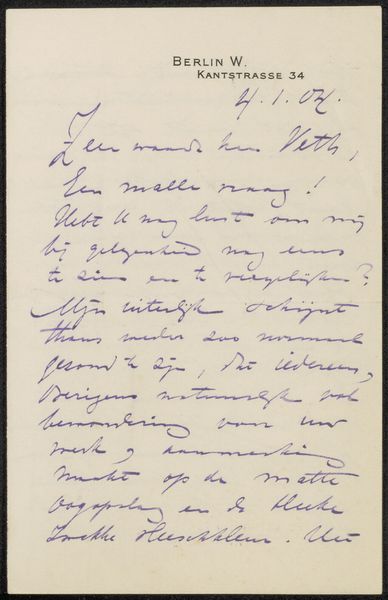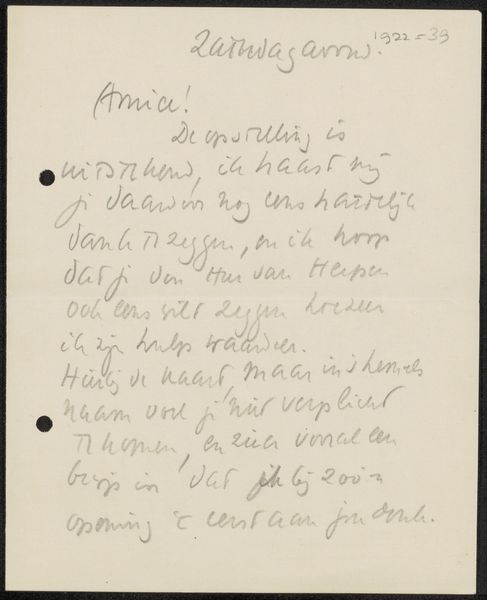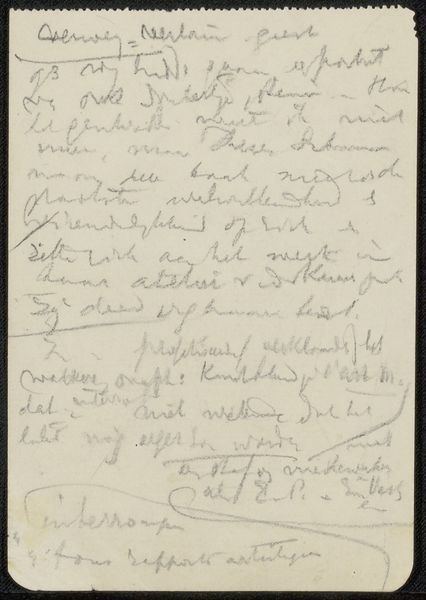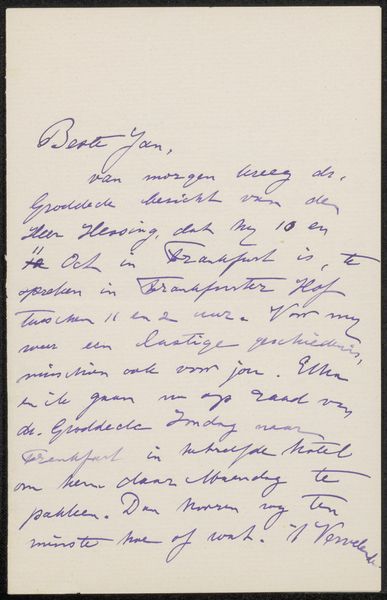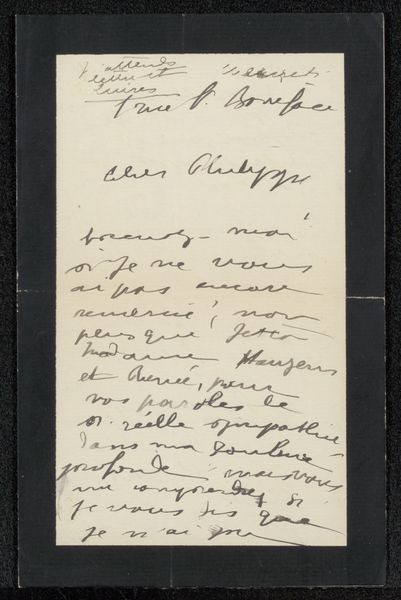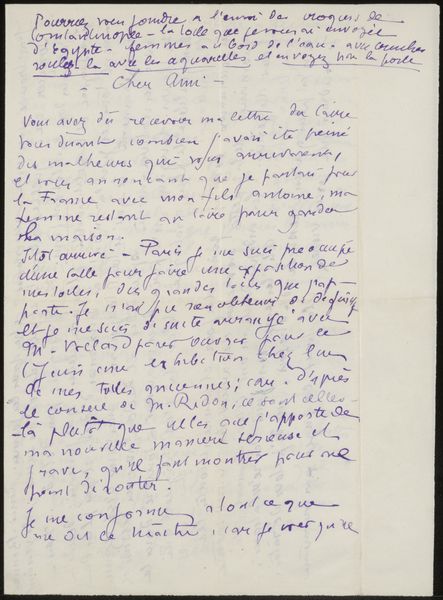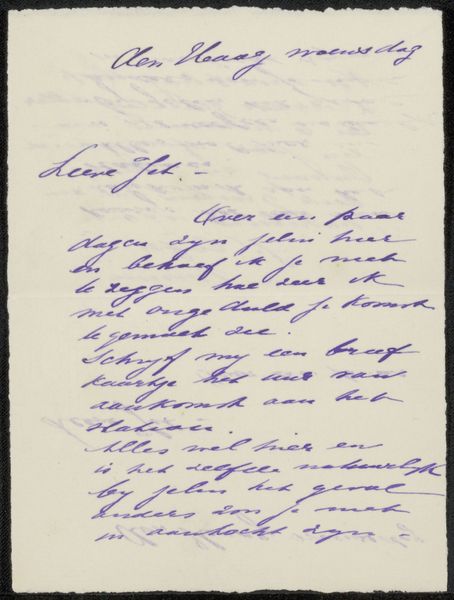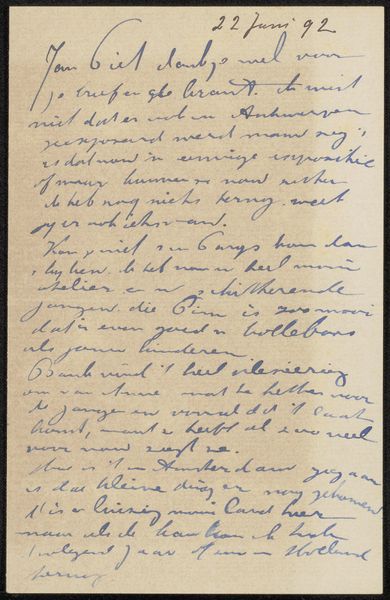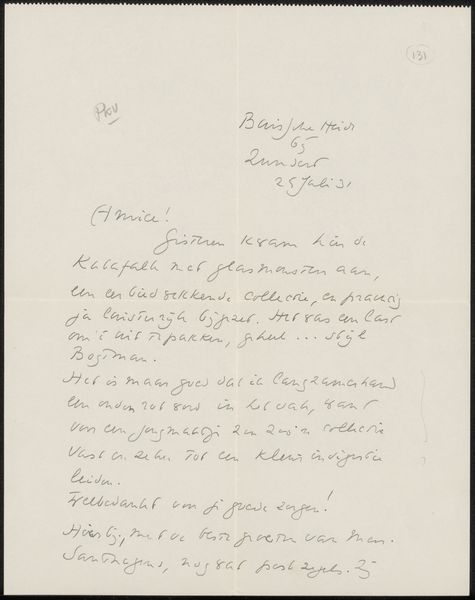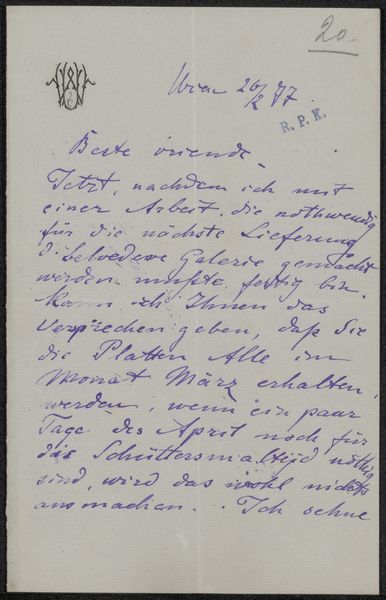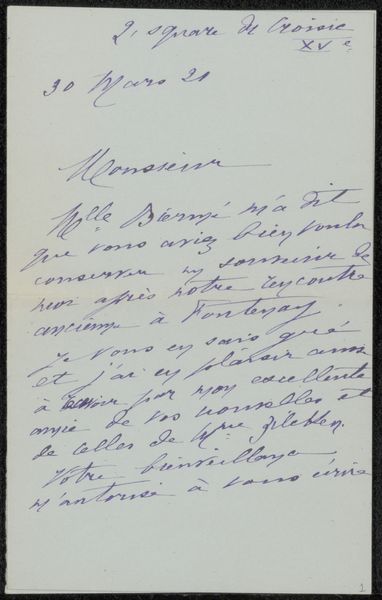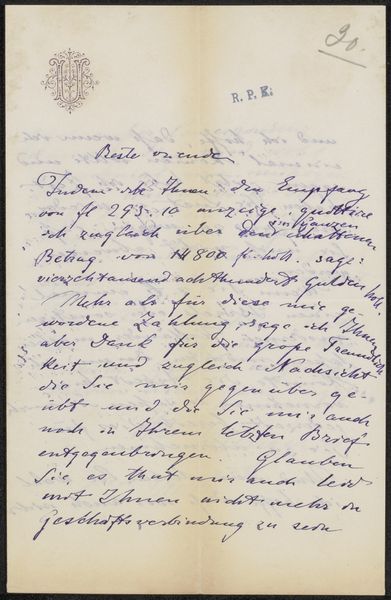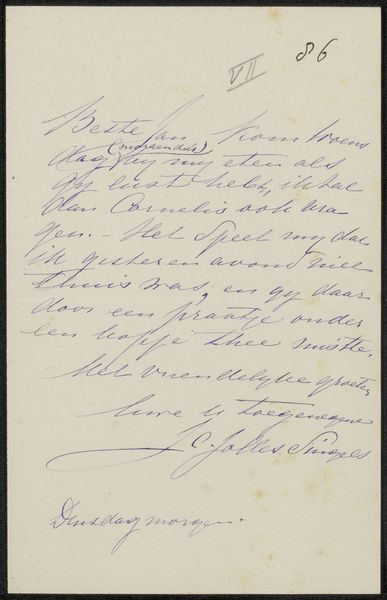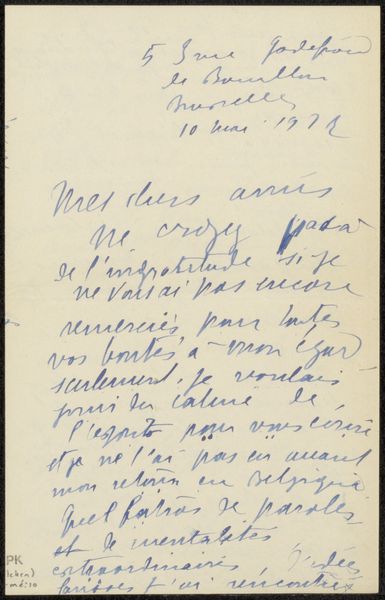
drawing, paper, ink
#
portrait
#
drawing
#
type repetition
#
aged paper
#
script typography
#
hand-lettering
#
hand drawn type
#
hand lettering
#
paper
#
personal sketchbook
#
ink
#
hand-drawn typeface
#
sketchbook drawing
#
sketchbook art
#
calligraphy
Copyright: Rijks Museum: Open Domain
Curator: This is "Brief aan Philip Zilcken," which translates to "Letter to Philip Zilcken," dating between 1867 and 1930. The artist, E. Boucabeille, captured this correspondence with ink on paper, offering us a glimpse into personal communication of that era. Editor: My initial thought is the intimacy. The blue ink, the looping script... It feels very personal, like intruding on a private moment. And look how the paper has aged; you can practically feel the history. Curator: Absolutely. Consider the context. Letter writing was a significant form of communication, especially for artists maintaining their networks. This isn't just a note; it represents relationships, patronage, and perhaps artistic collaboration. The style reflects a time when handwriting was an art form. Editor: Precisely. I think about who Philip Zilcken was, the likely recipient. The text references a lesson and reschedule, which immediately made me curious about their connection and the social dynamics at play. Was it a student-teacher dynamic? A patron and artist relationship? It feels charged with potential implications regarding power and access. Curator: Examining Boucabeille's broader artistic practices could shed some light. Was Boucabeille offering formal instruction, or was this an informal mentorship? The script, analyzed calligraphically, hints at particular conventions of the time period as well, mirroring a social code in that carefulness of penmanship. Editor: I find myself focusing on that script. There's a beauty to the imperfect hand, the flourishes, the weight of the ink. And it begs the question: whose stories were privileged enough to be documented and preserved? Whose handwriting wasn't considered important enough to archive? Curator: Those are crucial points to consider. Museums historically prioritize certain narratives. Examining pieces like this, we must question how these biases shaped our understanding of art history. The politics of who and what gets archived deeply impacts historical narrative and should drive further explorations. Editor: This single page now presents more questions than answers. This glimpse has stirred so many fascinating threads. Curator: Exactly! It showcases how even seemingly minor artifacts can be invaluable for broader societal understanding.
Comments
No comments
Be the first to comment and join the conversation on the ultimate creative platform.
